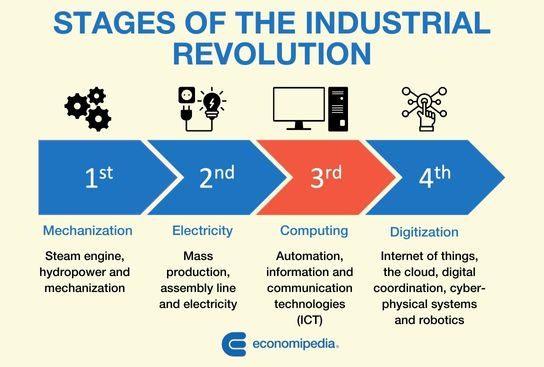The Diverging Paths Of Altman And Nadella: Implications For The Future Of AI

Table of Contents
Altman's OpenAI: A Focus on Generative AI and Research
OpenAI, under Altman's leadership, has become synonymous with groundbreaking advancements in generative AI. This focus on pushing the boundaries of what's possible has profound implications for various industries.
OpenAI's Vision and its Impact
OpenAI's mission is to ensure that artificial general intelligence (AGI) benefits all of humanity. This ambitious goal has fueled their pioneering work on models like GPT (powering ChatGPT), DALL-E (generating images from text prompts), and Codex (translating natural language into code).
- Text Generation: GPT models have revolutionized text-based applications, from chatbots and content creation to language translation and code generation.
- Image Creation: DALL-E has opened up new creative avenues, empowering artists and designers with unprecedented tools for image generation and manipulation.
- Code Generation: Codex is transforming software development, automating coding tasks and boosting developer productivity.
- Partnerships and Investments: OpenAI's strategic partnerships, notably with Microsoft, and its investments in research have significantly accelerated AI development.
- Ethical Considerations and Risks: The power of these models necessitates careful consideration of ethical implications, including potential misuse for misinformation, bias amplification, and job displacement.
The "Open" in OpenAI: Collaboration and Competition
OpenAI's name suggests a commitment to open collaboration. However, the reality is more nuanced. While OpenAI has open-sourced some components of its technology, it also heavily relies on proprietary models and licensing agreements to maintain a competitive edge.
- Partnerships: The partnership with Microsoft, a significant investor, provides OpenAI with substantial resources and cloud computing infrastructure, while granting Microsoft exclusive licensing rights to certain technologies.
- Licensing Agreements: OpenAI licenses its technology to various companies, fostering innovation while controlling access to its core models.
- Competitive Landscape: The intense competition in the generative AI space necessitates a balance between open collaboration and protecting its intellectual property. This creates complex challenges in navigating the ethical and commercial aspects of AI development.
Altman's Leadership Style and Risk-Taking
Sam Altman's leadership is characterized by a willingness to take bold risks and pursue ambitious goals, even if it means navigating uncertain territory.
- High-Risk, High-Reward Decisions: The pursuit of AGI is inherently risky, requiring substantial investment and a tolerance for failure. Altman's leadership reflects this commitment to pushing the boundaries of AI research.
- Public Persona: Altman's outspoken and highly visible public persona has contributed to OpenAI's prominent position within the AI community.
Nadella's Microsoft: Integrating AI into Existing Products and Services
In contrast to OpenAI's research-focused approach, Microsoft, under Satya Nadella, emphasizes the integration of AI into its existing product ecosystem.
Microsoft's AI-Powered Ecosystem
Microsoft's strategy centers on seamlessly embedding AI capabilities into its widely used products and services, enhancing user experience and productivity.
- Copilot in Microsoft 365: This AI-powered assistant enhances productivity across various applications, including Word, Excel, PowerPoint, and Outlook.
- AI-Powered Features in Azure: Microsoft's cloud platform, Azure, offers a range of AI services, allowing developers to integrate AI capabilities into their applications.
- Market Impact: The integration of AI into core products accelerates user adoption and strengthens Microsoft's position in the market.
A Cautious, Incremental Approach
Microsoft adopts a more measured and incremental approach to AI deployment, prioritizing responsible development and ethical considerations.
- Responsible AI Development: Microsoft emphasizes ethical guidelines and responsible AI practices, focusing on transparency, fairness, and accountability.
- Contrast with OpenAI: Microsoft's approach contrasts with OpenAI's more experimental, high-risk strategy. While this may result in slower progress, it mitigates potential risks and avoids unforeseen consequences.
Nadella's Vision for a Responsible AI Future
Nadella has consistently articulated a vision for AI that prioritizes ethical considerations and its potential to address global challenges.
- Ethical Guidelines and Initiatives: Microsoft actively develops and implements ethical guidelines for AI development and deployment, promoting fairness, transparency, and accountability.
- AI for Social Good: Microsoft invests in AI initiatives aimed at solving pressing global issues like climate change and healthcare.
The Implications of Diverging Paths for the Future of AI
The diverging strategies of Altman and Nadella have significant implications for the future of AI.
Potential Synergies and Conflicts
The relationship between OpenAI and Microsoft presents a unique dynamic – a blend of collaboration and competition.
- Collaboration: OpenAI benefits from Microsoft's resources and infrastructure, while Microsoft gains access to cutting-edge AI technologies.
- Competition: Both companies are competing for talent, market share, and influence within the broader AI ecosystem. This competition extends to other tech giants like Google and Meta, as well as numerous AI startups.
Impact on Industry Regulation and Ethical Considerations
The differing approaches will inevitably influence how AI is regulated and the broader public discourse around AI ethics.
- Regulatory Landscape: OpenAI's more experimental approach may necessitate stricter regulation to mitigate potential risks, while Microsoft's responsible AI initiatives could serve as a model for future regulatory frameworks.
- Public Perception: The contrasting strategies contribute to the ongoing debate surrounding AI ethics, responsibility, and societal impact.
Conclusion
The contrasting Altman and Nadella AI strategies highlight two distinct paths in the development and deployment of artificial intelligence. While OpenAI pushes the boundaries of generative AI through bold, research-driven innovation, Microsoft focuses on integrating AI responsibly into its existing products and services. Understanding these diverging approaches is crucial for comprehending the future trajectory of AI, its impact on various industries, and the ongoing ethical discussions surrounding its development and deployment. To further explore these crucial Altman and Nadella AI strategies, delve into the publications and statements released by both OpenAI and Microsoft, and actively participate in discussions surrounding responsible AI development and the future of this transformative technology.

Featured Posts
-
 Our Yorkshire Farm Reuben Owens Update On His Eight Siblings
Apr 30, 2025
Our Yorkshire Farm Reuben Owens Update On His Eight Siblings
Apr 30, 2025 -
 Compliance With The Latest Cnil Ai Model Guidelines A Step By Step Guide
Apr 30, 2025
Compliance With The Latest Cnil Ai Model Guidelines A Step By Step Guide
Apr 30, 2025 -
 Kritika I Khvalba Kak Se Spravya Turneto Na Bionse
Apr 30, 2025
Kritika I Khvalba Kak Se Spravya Turneto Na Bionse
Apr 30, 2025 -
 Podcast Production Revolution Ais Power To Process Repetitive Scatological Documents
Apr 30, 2025
Podcast Production Revolution Ais Power To Process Repetitive Scatological Documents
Apr 30, 2025 -
 New Southern Cruise Itineraries For 2025 Your Ultimate Planning Resource
Apr 30, 2025
New Southern Cruise Itineraries For 2025 Your Ultimate Planning Resource
Apr 30, 2025
Latest Posts
-
 Overtime Heartbreak Stars Defeat Ducks Despite Carlssons Two Goals
Apr 30, 2025
Overtime Heartbreak Stars Defeat Ducks Despite Carlssons Two Goals
Apr 30, 2025 -
 Analyzing Neal Pionk Recent News And Game Highlights
Apr 30, 2025
Analyzing Neal Pionk Recent News And Game Highlights
Apr 30, 2025 -
 Kinopoisk Darit Soski S Ovechkinym V Chest Rekorda N Kh L
Apr 30, 2025
Kinopoisk Darit Soski S Ovechkinym V Chest Rekorda N Kh L
Apr 30, 2025 -
 Ducks Carlsson Scores Twice But Stars Win In Overtime
Apr 30, 2025
Ducks Carlsson Scores Twice But Stars Win In Overtime
Apr 30, 2025 -
 Is Neal Pionk Being Traded Latest News And Rumors
Apr 30, 2025
Is Neal Pionk Being Traded Latest News And Rumors
Apr 30, 2025
